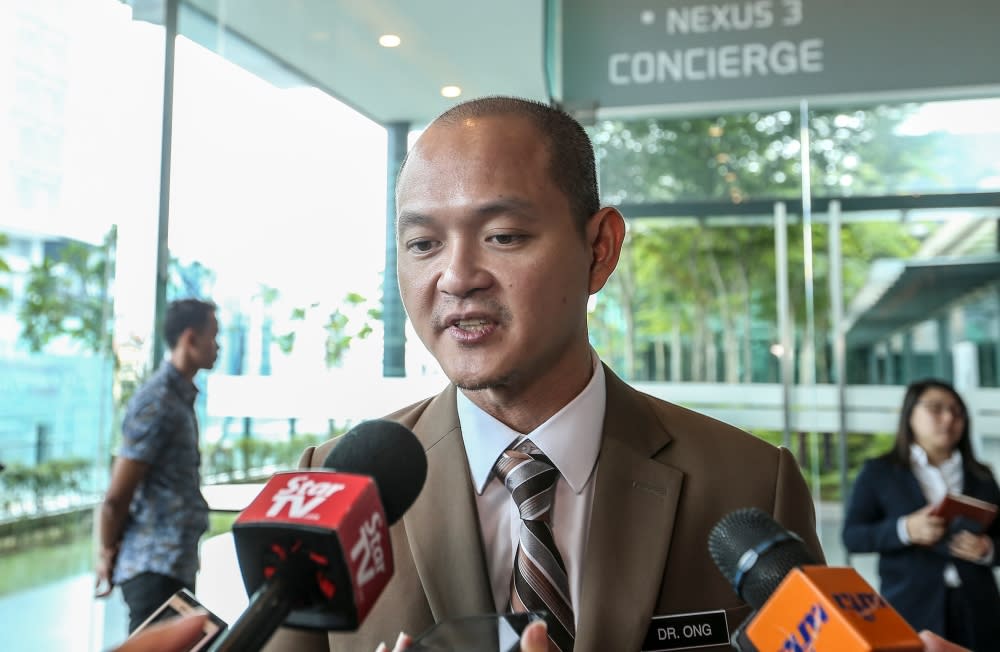Ong Kian Ming moots Johor-Singapore Chamber of Commerce as part of upcoming SEZ

KUALA LUMPUR, Dec 4 — Former deputy international trade and industry minister Ong Kian Ming today suggested the establishment of a Johor-Singapore Chamber of Commerce to oversee the interests of Singaporean companies in the state.
He said the joint body, which was suggested in a list of other proposals, would hopefully be considered by the Malaysian government ahead of the memorandum of understanding (MoU) signing for the Johor-Singapore SEZ between the two countries in January next year.
Ong, a former Bangi MP, said the proposal would gather Singaporean companies which have invested in Johor as part of co-organisation.
“These companies would benefit from having an organisation to oversee their investment interests.
“This is not just for the benefit of the SEZ, but as a confidence building measure or prelude to the creation of a Singapore-Malaysia Chamber of Commerce in Malaysia to represent the interest of the Singapore business community in Malaysia and a Malaysia-Singapore Chamber of Commerce in Malaysia to do the same for the Malaysian business community in Singapore,” he said as part of a list of ten proposals that can be considered by the Malaysian government towards the implementation of the SEZ.
Both Malaysia and Singapore were expected to finalise the terms of reference (ToR) on the proposed SEZ after discussions between Prime Minister Datuk Seri Anwar Ibrahim and his counterpart Lee Hsien Loong, during a leaders’ retreat in Singapore last October.
Ong today also reiterated the call to improve the physical connectivity between Johor and Singapore.
He said the matter has also been extensively brought up by Deputy Minister of Investment, Trade and Industry Liew Chin Tong on his vision for a Greater Johor Baru.
Ong proposed that ferry connections between Forest City in Johor and Raffles Marina near Tuas in Singapore, and between Pasir Gudang and Changi, will improve connectivity between the two countries.
He added that the ferry connections have the potential of creating new development hubs for manufacturing, logistics and other related services.
“This would mean putting on the table development masterplans in these areas where the synergies and objectives of Johor and Singapore can be aligned.
“For example, an improved logistics hub for the automotive sector in Pasir Gudang could be paired with plans to develop warehouses near the Tanah Merah terminal in Singapore so that high end auto components can be flown out of Changi while bulkier auto parts and vehicles can be shipped out from Johor,” he said, adding that the government should also look at having a third bridge linking Malaysia to Singapore in anticipation of increased economic activity, assuming of the successful implementation of the SEZ for the region.
In addition to that, Ong suggested that more can be done to improve the digital connectivity between Johor and Singapore, especially in preparation of the Johor Baru-Singapore Rapid Transit System (RTS) at the end of 2026.
He noted that Home Minister Datuk Seri Saifuddin Nasution Ismail and Johor Menteri Besar Datuk Onn Hafiz Ghazi have done their respective parts to improve the traffic flow at the Causeway and Second Link crossings.
However, the Ong suggested that one such solution would be the interoperability and mutual recognition of the National Digital ID (NDID) systems in both countries to ease the issue of interoperability.
“Singapore already has Singpass, and Malaysia is developing its own digital ID, led by Mimos Bhd, and supported by the new Govtech Nucleus Unit, which is developing a number of government digital products, including the recently relaunched data.gov.my website.
“If the development of Malaysia’s NDID is done in cooperation with Singapore, specifically the open government products (OGP) arm of GovTech Singapore, not only would the development process go smoother, but the issue of interoperability will be dealt with right from the start.
“A government-to-government (G2G) MoU between OGP and the Govtech Nucleus Unit would spell out the parameters of cooperation, including security protocols to protect the data sovereignty of both countries,” he said.
Ong also touched on the possibility of joint investment pitches and projects in both Johor and Singapore.
He gave an example of Johor and Singapore jointly pitching Tesla (or any other autonomous vehicle initiative) for other investments into both countries.
“One high-value target would be TSMC (formerly known as the Taiwan Semiconductor Manufacturing Company Limited), the largest foundry company in the world.
“There have already been news reports that an affiliate of TSMC, Vanguard International, is looking to Singapore to produce 12-inch chips.
“Rather than competing with one another for this investment, why not make a joint-bid for this investment, which involves not just the foundry itself, but also the larger ecosystem that includes testing and packaging, chip design, logistics, and talent development?” said Ong.
In such a situation, the DAP politician explained that the Malaysian Investment Development Authority (MIDA) and Singapore Economic Development Board (EDB) could also talk to other customers of TSMC, including Tesla and Nvidia for example, to bring in more jobs, research and development, and activities as part of this larger ecosystem, which includes the testing of autonomous driving AI capabilities as one of the many activities which Malaysia and Singapore can jointly offer.
Last year, Singapore stood out as one of Malaysia’s primary sources of foreign direct investment (FDI), contributing 8.3 percent to Malaysia’s total investments for that period.
The planned Johor-Singapore SEZ seeks to enhance the movement of goods and people across the Johor-Singapore Causeway, while also bolstering the overall ecosystem of Iskandar Malaysia and Singapore.
The SEZ is set to be established within Johor’s Iskandar Malaysia region with the government actively promoting it as an attractive investment destination.



